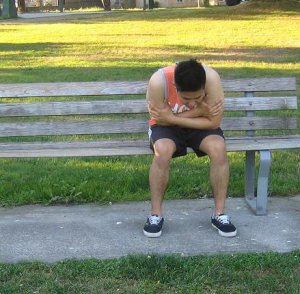Hypothermia is the dropping of the body temperature to degrees that are too low for normal function. Hypothermia is classified as body temperature below 35 degrees Celsius or 95 degrees Fahrenheit. On the first stage of hypothermia, there is shivering, the extremities becoming numb and there is a fast breathing. The second stage involves increasing shivering, no muscle activity and some body extremities becomes blue. In the final stage, the symptoms become severe, no mental abilities, organs of the body fail to function and maybe death can happen.
[youtube url=”https://www.youtube.com/watch?v=dEKaCOx7igI” width=”220″]Quick Tips
The material posted on this page on environmental emergencies, including hot and cold emergencies such as hypothermia, is for learning purposes only. If you want to learn to recognize, prevent and manage hypothermia take a standard first aid course with one of our training providers. If you suspect you or someone you know is having severe hypothermia contact a medical professional immediately.
Causes
The main cause of hypothermia is exposure to very cold temperatures, and the amount of time for hypothermia to set in will depend on the body size, weight, the clothes used, and also the weather condition. When the individual is submerged in cold water for a long time, it can cause hypothermia, and the cold water soaks in the clothing and will attack the body with additional coldness. Accidental hypothermia happens after exposure to cold temperature without enough warm and dry clothing for protection.
Hypothermia can cause constriction of blood flow in blood vessels and interrupting the flow of oxygen. The flow of blood weakens, thus the vital organs and tissues are not functioning anymore. The body tissue will suffer necrosis which is known as tissue death.

Symptoms
For adults
- The person shivers which stops as hypothermia progresses. It is a good sign that the heat regulation system of the person is still active.
- There is slow and shallow breathing.
- The person is confused and there is memory loss.
- Mumbling when talking.
- Feeling drowsy and exhausted.
- Hands are fumbling, stumbling steps and loss of coordination.
- A weak and slow pulse.
- A person will become unconscious in severe hypothermia.
- In infants who suffer hypothermia, they are cold-to-touch and have bright red skin. The babies have low energy.
Treating hypothermia
There are first aid measures that you have to perform if you suspect that an individual is experience hypothermia.
- First thing to do is to observe the person if he/she is shivering, has pale skin and cold to touch as well as irritability and confusion. It is important to understand the victims especially children and elderly because they may not be aware that they are already suffering from hypothermia.
- Re-warm the victim if he/she is already suffering from hypothermia; monitor the pulse while treating the victim. Put the individual in a shelter where there is no wind. If there is no shelter, look for a sunny place and create a shelter.
- Remove any frozen or wet clothing on the victim and replace with dry coverings or blanket. Even body heat can also help.
- Bath the victim in lukewarm water if indoors, do not use hot baths. Let the victim drink hot beverages, sweetened drink, and not alcohol since it will cause a drop in the body temperature.
- If the victim is unconscious, use heaters and blankets, monitor pulse and breathing frequently.
- If the victim stops breathing and the pulse cannot be located, perform CPR on the victim, and call for medical help.
